Among the First Cosmetic Surgeons Using PRP
I was among the first doctors using platelet-rich plasma, or PRP, for cosmetic treatments, starting around 2008. Oral surgeons had established in the medical literature the value of PRP for patients, notably for dental implant surgery. Orthopedic surgeons were also using the healing properties of PRP in sports medicine.
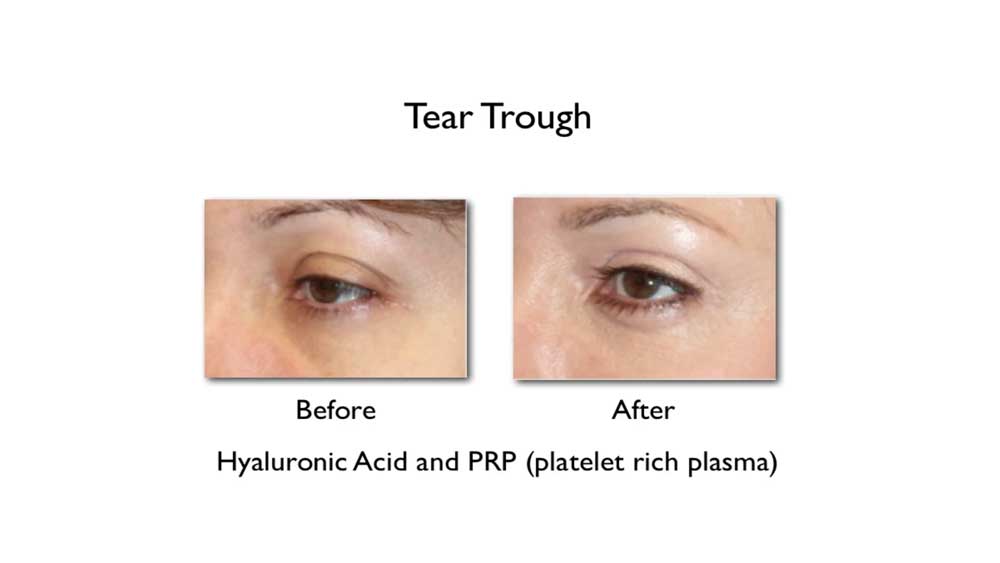
The potential for PRP to improve collagen and blood supply lead to Dr. Prasad being one of its earliest adopters in cosmetic medicine in 2008
Since PRP stimulates collagen production and improves blood supply, I saw a potential to help my patients by developing my own strategies for the treatment of aging skin, wrinkles, under eye dark circles, and acne scars.
PRP in Skin Rejuvenation
I took an interest in PRP long before most other cosmetic or plastic surgeons. This was probably due to the absence of any marketing by large cap companies peddling lasers and trendy treatments. Centrifuges and your own blood was not so profitable for the big companies in the aesthetics field. I recognized the potential value of using a material that can increase collagen, blood supply, and improve healing. I saw how PRP can be used to make your skin look more vibrant and youthful and continue to use it daily in my practice.
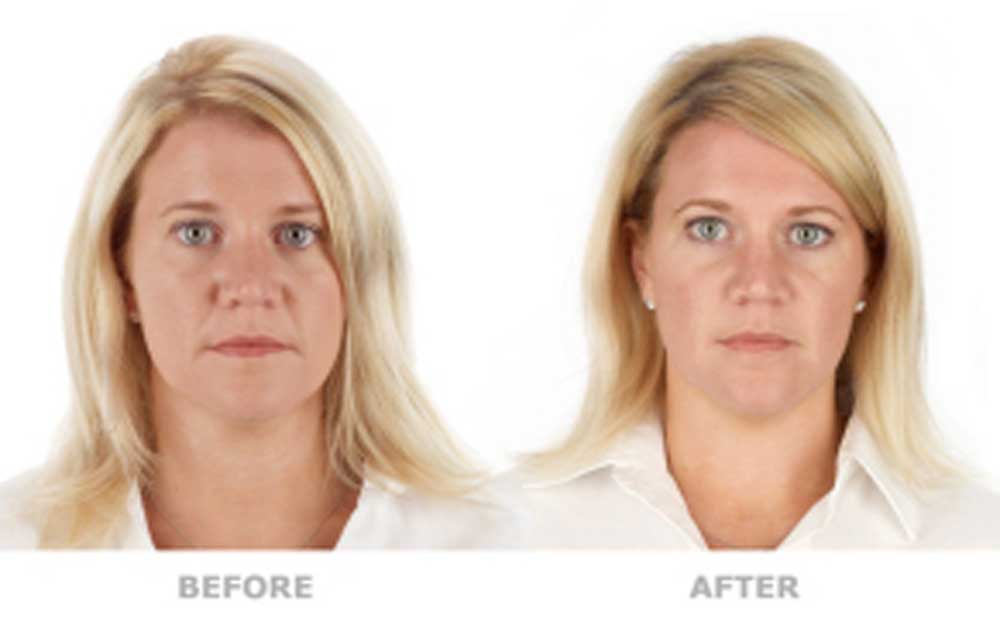
PRP can improve skin quality for a noticeably younger appearance, without surgery or downtime. Images courtesy of Selphyl.
PRP in Eyelid Surgery
After first using PRP following lower eyelid surgery around 2008, I continually use PRP during lower eyelid surgery. Eyelid skin is the thinnest skin in the body at only 0.5mm thick. The healing and growth factors of PRP, which stimulate collagen production improves the skin quality of the lower eyelid. Dark, under eye circles is often associated with pigmentation, pooled blood, iron deposits, and thin eyelid skin revealing the blood vessels and muscle beneath it. It appears that effect that PRP has by increasing blood supply and collagen production results in the improvement of dark under eye circles for many people. I also use PRP to improve the healing for upper eyelid surgery and surgery for under eye bags.
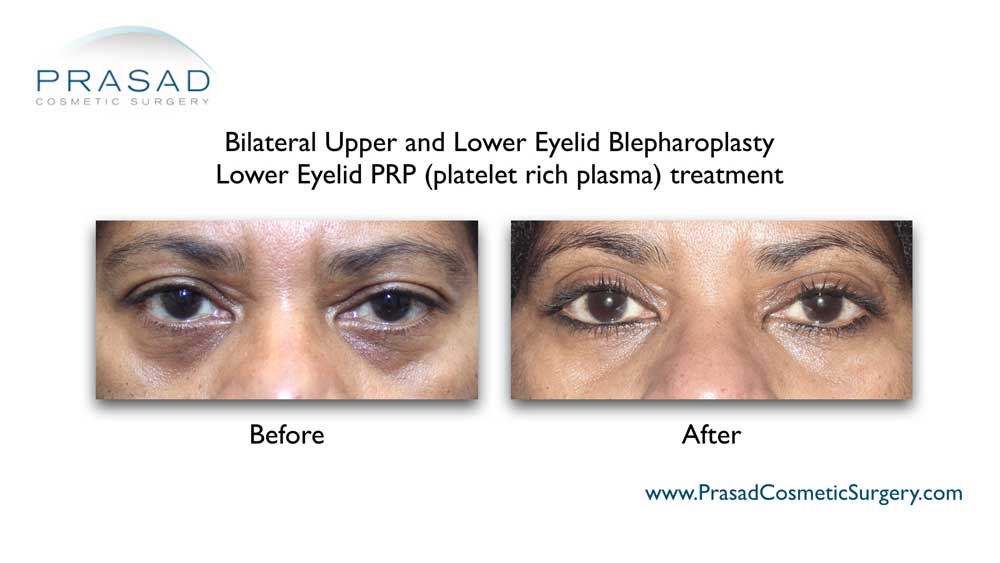
PRP can improve skin quality and surgical healing when applied during upper and/or lower eyelid surgery
PRP Combination Treatments
I combine PRP with hyaluronic acid filler like Restylane or Juvederm for a synergistic effect. For example, PRP and one syringe of hyaluronic acid filler to is the treatment known as the Vampire Facelift, created by Dr. Charles Runels. For many years, I have been part of the official Vampire Facelift Network of doctors, having personally trained with Dr. Runels in its application. While the Vampire Facelift is not a replacement for surgical facelifts performed by patients usually in their 50s and older, it is a treatment for people in their 30s to 40s where the added volume of filler lifts the face outward from the bone structure, while PRP helps to improve skin quality.
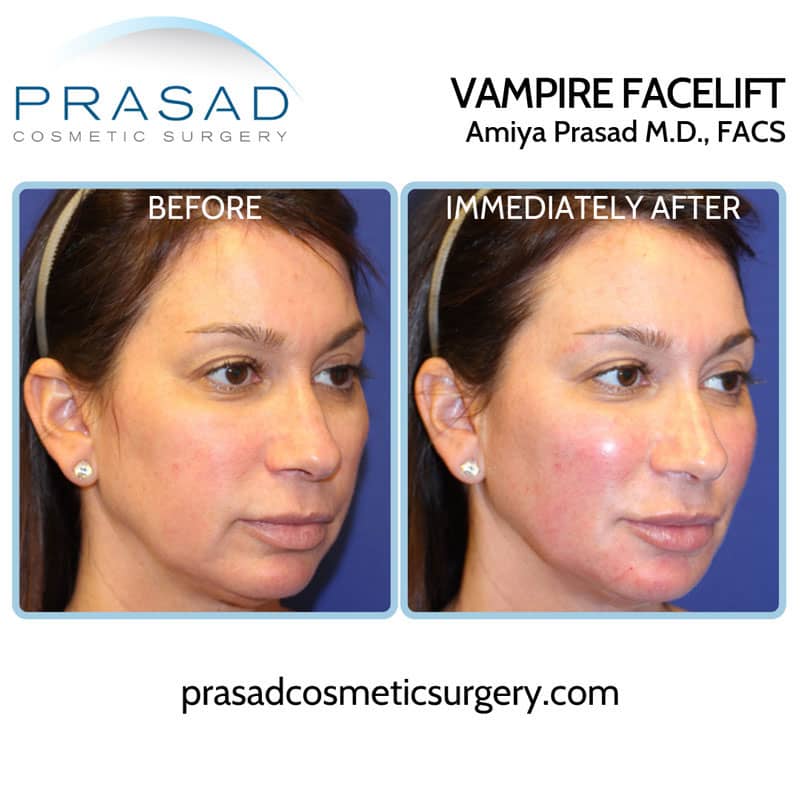
PRP can help improve skin quality, both by itself and combined with other modalities like cosmetic filler in the Vampire Facelift
In the eye area, I routinely use PRP to improve the lower eyelid skin quality. In the same session, I use hyaluronic acid filler to add volume to hollow tear troughs.
History and Experience in Using ACell Prior to Hair Loss Treatment
The name ACell is actually the name of the company, which makes several products derived from “acellular or extracellular matrix (ECM)” which comes from pig bladder for the purpose of enhanced wound healing by the activation of your body’s natural stem cells. The company name “ACell” has become synonymous with the product similar to the way “Kleenex” is used for tissues, or “Q-tip” for cotton-tipped swabs. I was among the first doctors to use ACell for surgery. Although the material was being used by the military and in veterinary medicine, there was little knowledge or experience with it in cosmetic and reconstructive surgery. In fact, my mentioning “ACell” to colleagues was typically the first time they had ever heard of it.
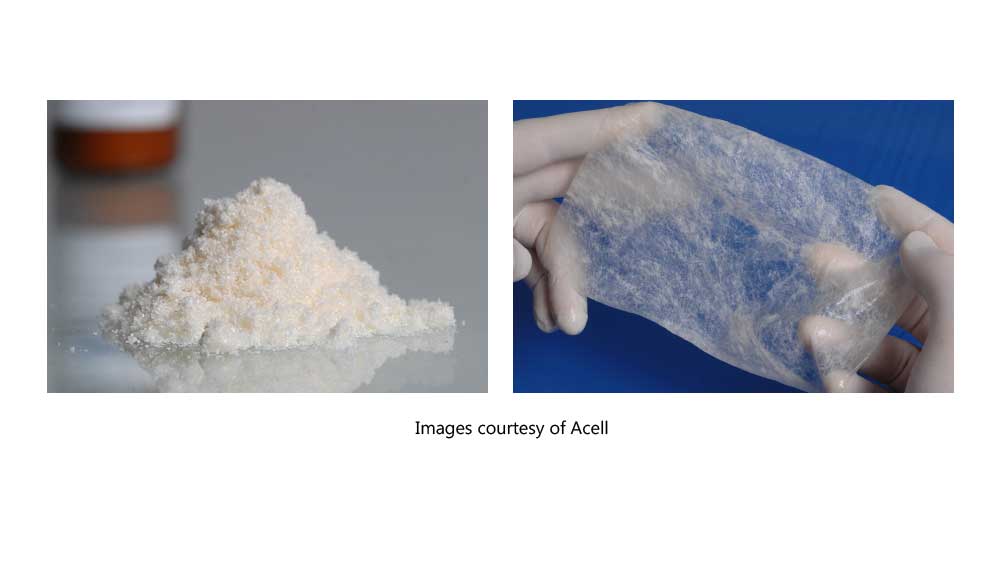
Extracellular matrix, or acellular matrix by ACell in powder or sheet form is a little harder to dose appropriately than pharmaceuticals
Unlike a fluid like an antibiotic, acellular matrix comes in the form of sheets and powder. This makes the concept of dosing more difficult than it is with pharmaceuticals. In addition, the tissue response to acellular matrix took weeks and months to observe. Based on the observations I made of tissue responses, which I documented with high-resolution medical photography and microscope photos, I came up with different protocols for specific conditions. I further factored in patient characteristics such as age, gender, and for hair loss, the age of onset, rate of progression and degree of hair loss in order to customize the treatments I perform. Knowing the difficulties I faced working with ACell (acellular matrix), it’s clear that medical practices offering ACell are following a limited approach which is usually taught in a few hours of a 1 day course. This means they had no prior knowledge derived from actual firsthand experience.
Experience with ACell and PRP unrelated to Hair Loss Treatment
As a cosmetic surgeon, I recognized the potential benefits of advanced regenerative wound healing and used ACell and PRP for my cosmetic surgery patients as well as my patients with genetic pattern hair loss. I looked at applying ACell and PRP separately and together for surgical and non-surgical cosmetic procedures. For example, when I perform facelift surgery, I use a formulation I developed for ACell and PRP, which I use at the time of surgery and have seen remarkable improvements in the healing of these incisions. I’ve had the incisions appear at 1 month to be almost undetectable.
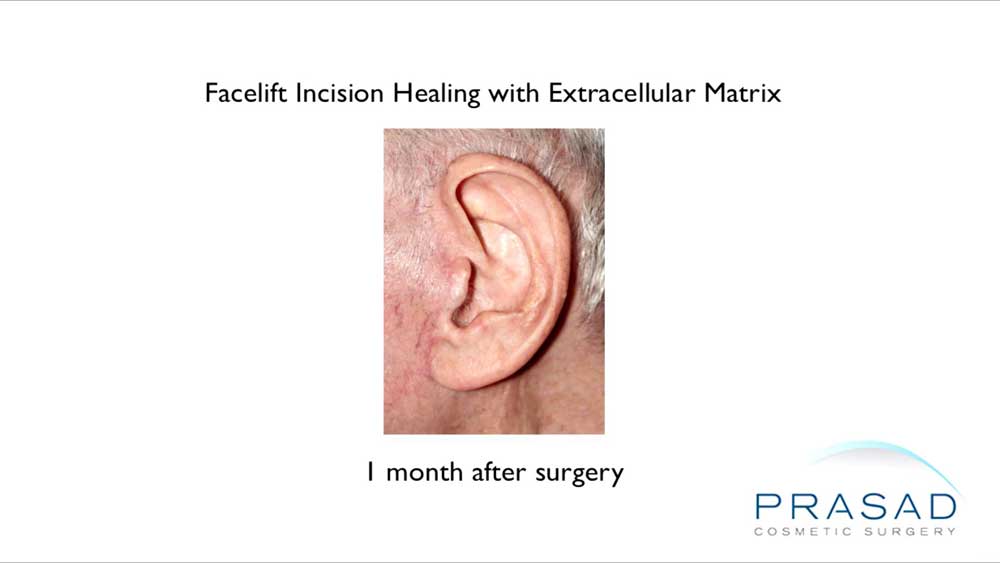
Prior to using it for hair loss treatment in 2010, Dr. Prasad used ACell’s extracellular matrix for healing with surgical incisions, like the incision along the ear for facelifts
ACell for Regenerative Medicine
Extracellular matrix by ACell is when applied to a wound, activates your body’s stem cells to regenerate tissue. This remarkable characteristic is exemplified by the complete restoration of an amputated fingertip after an accident. This means that skin, bone and muscle tissue as well as the fingernail was completely regenerated. This type of tissue regeneration is unprecedented.
I started using ACell clinically around 2010 for incision healing, and procedures needing tissue regeneration. Areas such as the nose and ear, where significant tissue was lost due to skin cancer healed in ways that would not have been seen prior to the use of acellular matrix.
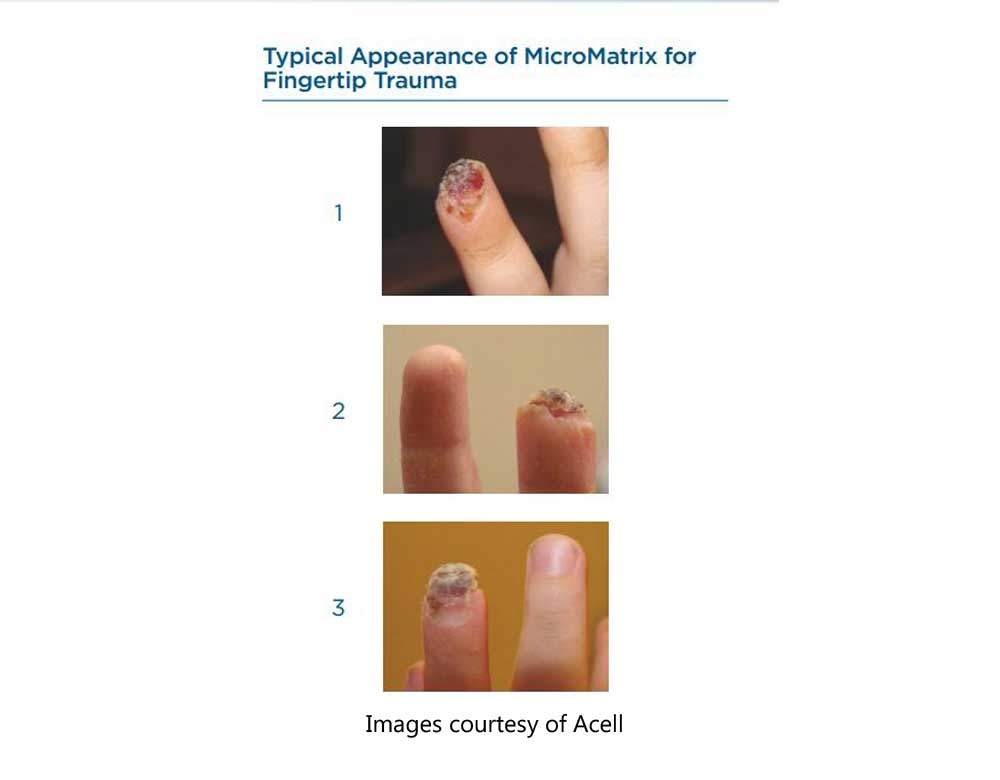
Extracellular matrix by ACell built its reputation in regenerative medicine by regenerating lost fingertips.
I found the regenerative properties of ACell particularly useful for complex revision eyelid surgery. As an Oculofacial Plastic Surgeon, I routinely see patients who have complications from eyelid surgery, in particular, lower eyelid retraction (lower eyelid is pulled downward). These patients have lost a significant amount of the delicate support tissue in their eyelid. I perform surgery with tissue grafts and skin grafts to restore their appearance and restore the function of the eyelids. I have found the use of PRP and ACell has been useful to enhance healing and I am continually impressed by the results I see.

ACell’s extracellular matrix works synergistically with tissue and skin grafts in issues like lower eyelid retraction, where excess skin and tissue were removed in prior surgery.
Among the First Using ACell and PRP for Hair Loss Treatment
I used ACell and PRP to help with hair transplant healing around 2010. The purpose was to help the healing of the donor area located at the back of the head. Hair grafts are harvested from the permanent zone of hair that’s genetically resistant to hair thinning. This involves excising a strip of skin with hair from the permanent zone. This is why this hair transplant surgery is commonly called the “strip method” or follicular unit transplantation (FUT). An incisional scar, which doesn’t heal well, can make having had a hair transplant surgery look very obvious. I applied powder and a suspension with PRP of extracellular matrix to help heal the area of the donor area strip excision. This strategy worked very well in most cases, resulting in a scar which was barely detectable, even with the hair combed up to reveal where the strip was excised.
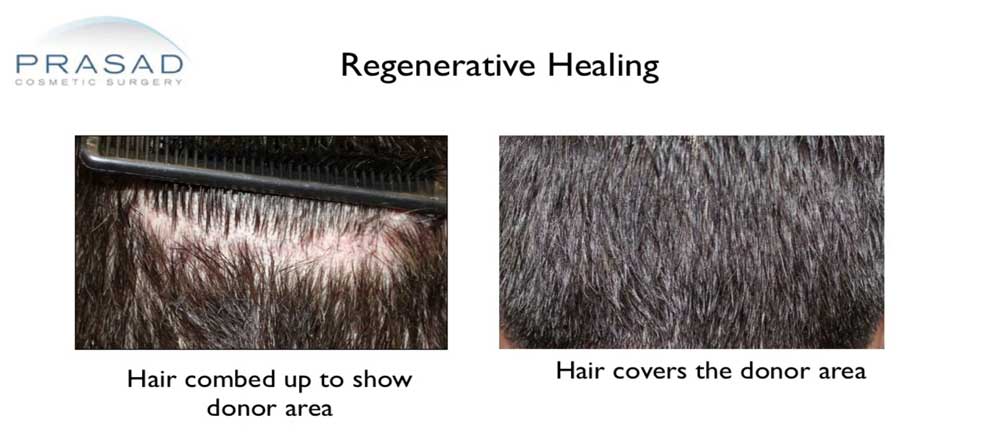
Results of first using ACell PRP in 2010 for healing of follicular unit transplant (FUT) excision at the donor area at the back of the head, with practically no visible trace of a scar
In addition to optimizing the strip scar, I also wanted to maximize the growth and survival of transplanted hair. In fact, up to 90% of transplanted hair grafts may not survive the harvesting and transplantation process. In order to improve hair graft survival, I applied ACell and PRP through scalp injection and by exposing the grafts to the ACell suspension we used at the time. This resulted in faster graft healing and significant improvement in graft survival.
The Discovery of ACell and PRP in Thickening Thinning Hair
On several patients, about a year after transplant surgery with ACell and PRP, I discovered that not only did their hair grafts heal better, and the donor incision was barely perceptible, but areas where there was no transplanted hair appeared to have hair growth and existing hair became significantly thicker. This was the “eureka” moment for me to pursue the use of ACell and PRP as a hair loss treatment without surgery.
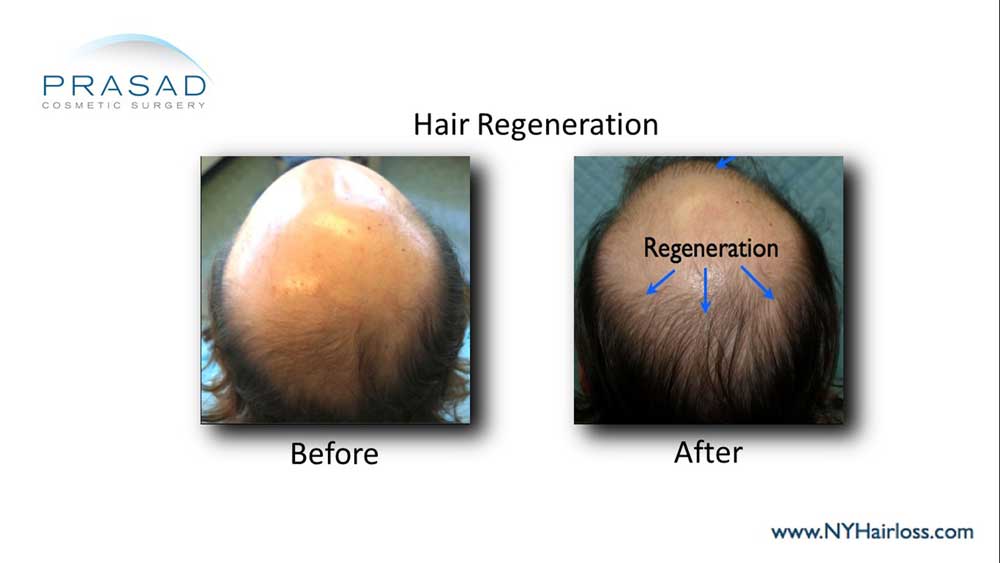
Original hair transplant patient where application of ACell PRP thickened thinning hair in area where no hair grafts were placed
The challenge at this time was that the improvement in hair growth and thickening was not consistent. I continually worked on refining the formulations and delivery methods to achieve more consistent results.
Consistency of Results
I began focusing on using our Hair Regeneration treatment as a non-surgical, standalone treatment for patients with different types of hair loss in 2011. As we looked at the results for patients who had only one treatment session, we saw improvement in hair thickness and scalp coverage in over 99% of male patients in the first 2 years after treatment.
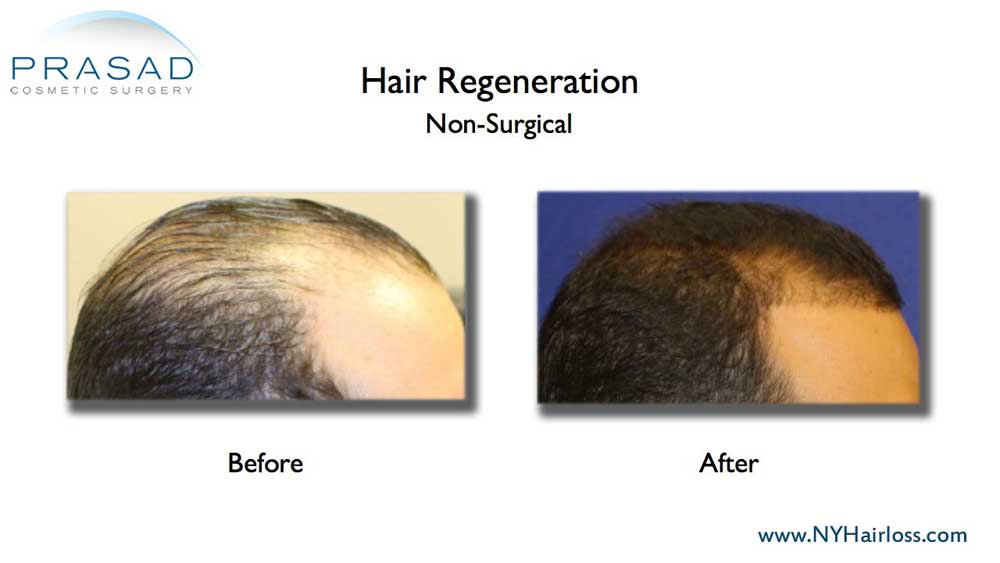
Early Hair Regeneration ACell PRP patient, showing thicker hair coverage after a single treatment
Improvement in Diagnosing Female Pattern Hair Loss
At first, we were not getting the same success rate with female patients as we were with males. At the time, we were seeing about a 70% success rate for women. There appeared to be more varied causes of hair loss in women compared to men, such as hormonal imbalances and chronic telogen effluvium. By selecting female patients with androgenetic alopecia or female pattern hair loss specifically, we were able to achieve the same overall 99% success rate of pattern hair loss treatment for women.
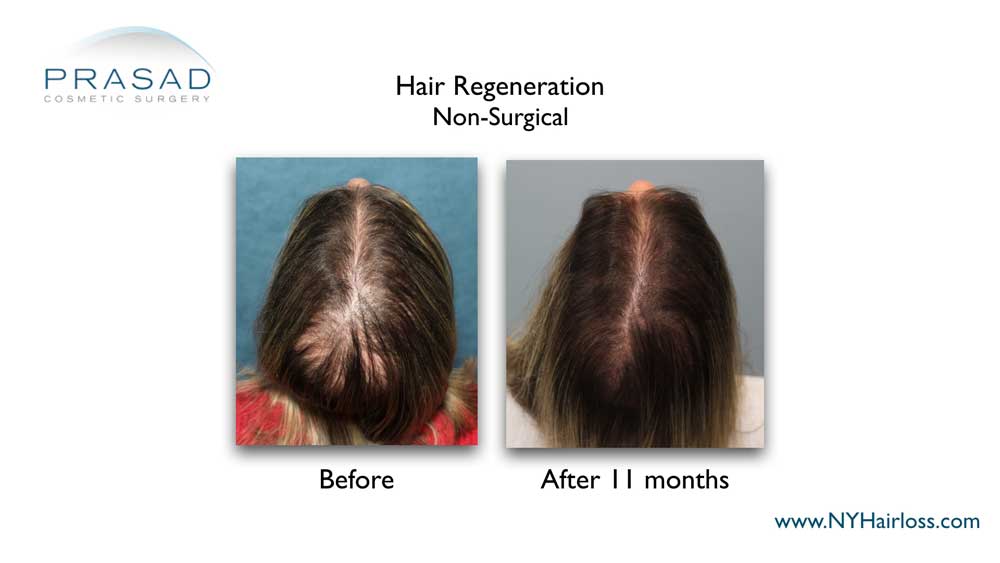
As diagnosing female pattern hair loss from other causes improved, we have achieved the same 99% success rate with Hair Regeneration in women
Single Treatment Session Lasting 3-5 Years
We continued to look at our patient data over the subsequent years and found that generally, with a single treatment session of Hair Regeneration of ACell /PRP, the effects appeared to last 3 to 5 years for most patients. At the time, I started looking into doing a second booster treatments for some patients with more advanced hair loss.
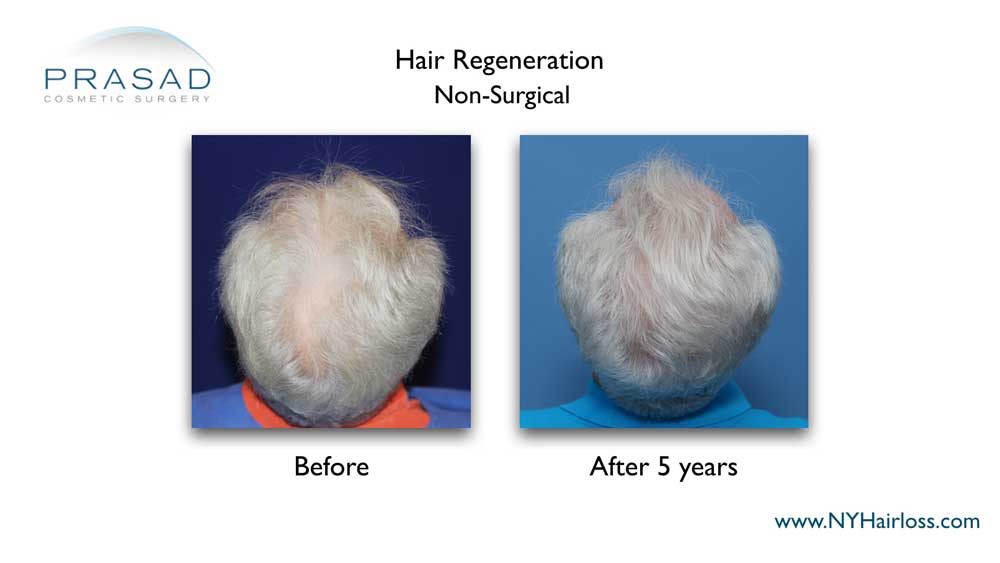
Male patient shown 5 years after a single Hair Regeneration ACell PRP treatment, maintaining thicker scalp coverage
Second Treatment Protocol
As we were seeing more patients with more aggressive and advanced hair loss, we incorporated a second injection session for more patients. This strategy was based on the improvement we saw at approximately 6 months after a second injection was performed at 15-24 months after the first treatment. Recognizing that dormant hair follicles that would regrow hair after the first treatment session were fine in quality, we would do the second treatment session about 15-24 months after the initial session and found that many of these fine hairs would become thicker resulting in better scalp coverage. The second treatment session is done at no extra charge and is part of a treatment plan.
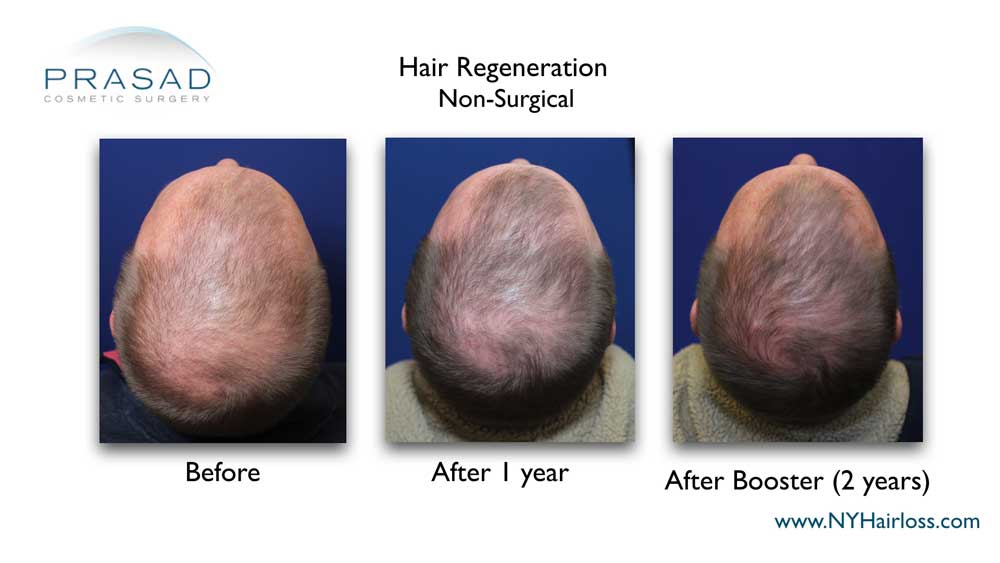
A second treatment Hair Regeneration treatment for advanced hair loss patient sis done 15-24 months after the first, to thicken fine hair growth stimulated by the first treatment, at no extra charge
Refinement of ACell and PRP Protocol for Young Male Patients
In the earlier years, much of our first standalone Hair Regeneration ACell/PRP patients were middle aged men who started seeing more hair loss in their 40s or older. With the significant success of our treatment, word of mouth, and growing interest online and in social media, we started to get more younger male patients seeking to have treatment. We had many young male patients who didn’t want to take finasteride due to fear of side effects, and came in for Hair Regeneration as an alternative.
We had a lot of success in most of our young male patients who were not taking finasteride. I observed that in some of these patients, the effectiveness of the treatment wasn’t lasting as long, and the coverage was not at the same rate of our older patients. Looking at my data, I recognized that there was a possibility that the effect of DHT on the outcome of hair regeneration treatment needs to be factored into a treatment plan. Hair Regeneration, or any other ACell + PRP treatment does not block DHT like the drug finasteride. It appears that men with later onset of pattern hair loss have less DHT-sensitive hair, in comparison to men with earlier onset and more aggressive pattern of hair loss.
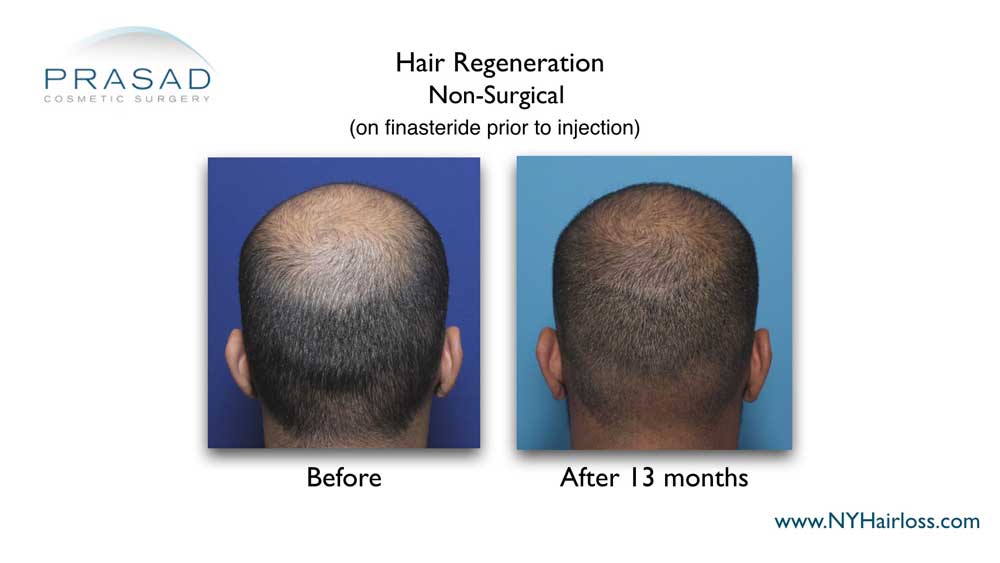
Hair Regeneration is not a finasteride replacement for young men with high DHT-sensitivity, but can give the scalp more hair density than finasteride alone
I determined that in order to achieve optimal results for the longest period of time, to incorporate finasteride as part of the treatment plan for younger men with aggressive hair loss.
Minoxidil and other drugs
Both men and women can use minoxidil to treat hair loss. Many of my patients complain of scalp irritation with minoxidil use. I’ve generally found that after we treat both men and women with our Hair Regeneration treatment, that minoxidil is not necessary to sustain the results.
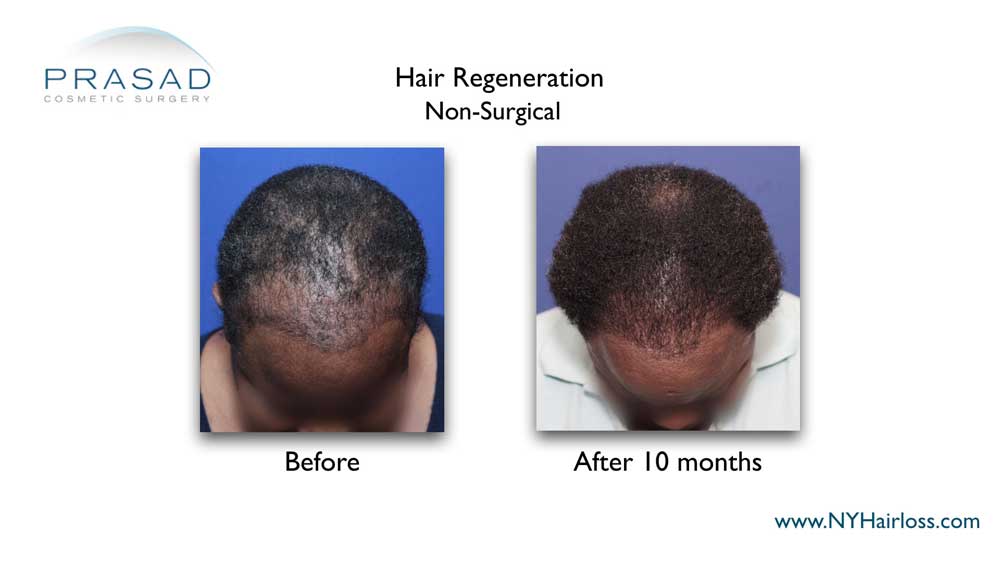
All Hair Regeneration patients can stop or be weaned from minoxidil, and women can also stop using spironolactone
Spironolactone, which works as a testosterone blocker is sometimes prescribed by dermatologists to treat female pattern hair loss. I generally don’t prescribe spironolactone and have found consistently good results from Hair Regeneration alone for women without spironolactone.
Customized ACell + PRP Formulation and delivery methods for every Patient
Unlike all other practices offering a limited ACell + PRP formulation for hair loss, every Hair Regeneration patient we treat has their formulation of ACell and PRP customized to their individual hair loss factors. Since 2011, I’ve developed and refined an algorithm to formulate the amount of ACell and PRP I use and the method of placement based on a patient’s:
- Gender
- Age of onset of hair loss
- Degree of hair loss
- Previous hair loss procedures (like transplantation)
- Existing hair loss medications (like finasteride)
Each pattern hair loss case is different, so we don’t believe the same treatment for every patient will be equally effective.
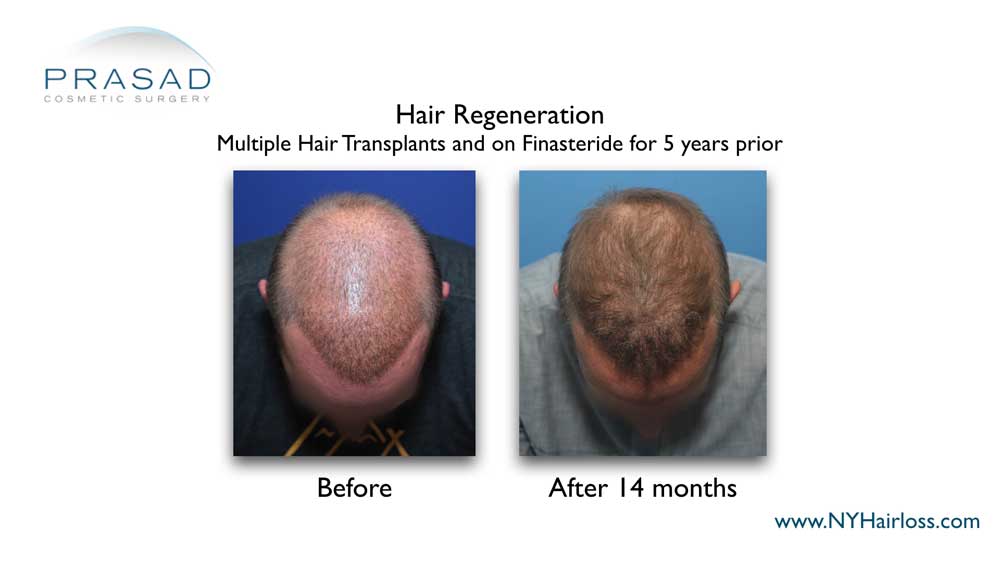
Factors like age, age of onset of hair loss, prior hair transplants, taking hair loss drugs like finasteride are important in the Hair Regeneration algorithm for customization
The Longest and Most Extensive Experience with ACell + PRP
As pioneers of ACell +PRP treatment, and consistently serving patients from around the world since 2011 with Hair Regeneration, I recognize the significance of my role in helping my patients manage their hair loss. I evaluate every patient with high-resolution digital photographs and microscope photos. Based on my personal experience, I provide you with a treatment strategy and see you every three to six months for examination and review of your results for the next 2 years. If I don’t think you’re a good candidate for the treatment, I will tell you.
You can reach us in Manhattan at (212) 265-8877, Garden City, Long Island at (516) 742-4636, or Vienna, Virginia at (703) 356-1336. You can also reach us by filling out the contact form below, and we’ll follow up with you.
Most Extensive Experience with ACell + PRP Working for You
As pioneers of ACell +PRP treatment, and consistently serving patients from around the world with Hair Regeneration, you may want that experience and expertise working for you. You can reach us in Manhattan at (212) 265-8877, Garden City, Long Island at (516) 742-4636, or Vienna, Virginia at (703) 356-1336. You can also reach us by filling out the contact form below, and we’ll get back to you.
